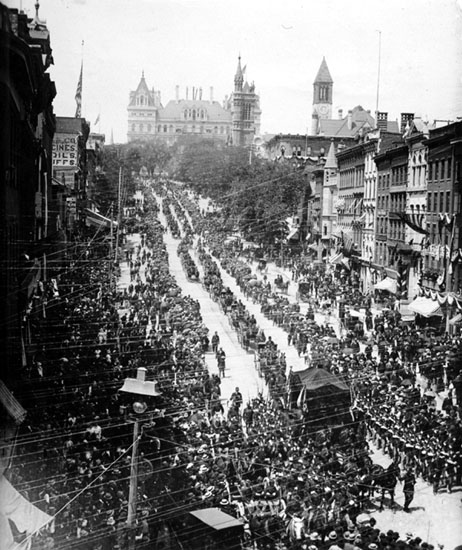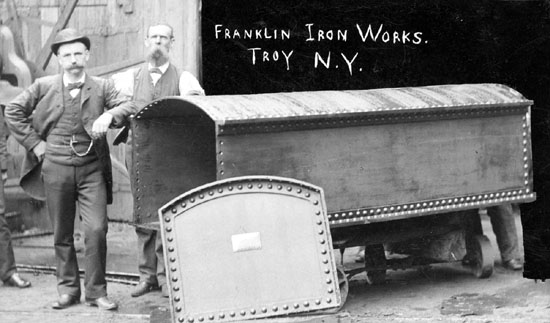
We all know (we do all know this, right?) that General Ulysses S. Grant finished his military memoirs in a small cottage at Mount McGregor just before dying there on July 23, 1885, a bit more than twenty years after Appomattox. The cottage, loaned him by Joseph Drexel of New York, was subsequently presented to the Grand Army of the Republic and eventually became a New York State Historic Site.
It was some days after his death before a memorial service was held at the cottage on August 4 (and on the same day at Westminster Abbey, London), after which his body came by rail to Albany, where it lay in state in the new Capitol, still very much under construction, and was viewed by thousands. The next day, August 5, the General’s body was escorted down State Street hill, again with thousands looking on, and sent on to New York City, where he had lived prior to coming to Mount McGregor. The city had pledged that he could be buried in any park to his liking, and a huge sum was collected to build his tomb in Riverside Park. General James Grant Wilson, in his “Life of General Grant,” gave a sense of the send-off given to this respected old soldier:
“On Wednesday afternon, the 5th, the body of the great soldier arrived in New York, and was escorted by an imposing body of troops to the City Hall. For three days it lay in state, and was viewed by nearly a quarter of a million of persons, including a large number of old soldiers who had served under him.
“Saturday, August 8th, was the day appointed for his public funeral, the arrangements having been made by General Winfield S. Hancock. A more magnificent demonstration was never witnessed in the New World, attesting the nation’s admiration and respect for the memory of the American soldier. It is supposed that at least a million and a half persons saw the procession. The streets of the city echoed to the tramp of thirty thousand soldiers and veterans who marched with measured tread to the solemn music of a hundred military bands. There were to be seen heroes of scores of battles, and the torn and tattered flags that waved over Shiloh, Vicksburg, the Wilderness, and other well-contested fields. Never but once before and once since in the history of New York have so large a number of armed men marched through its streets. . . .
It was nearly six hours after the funeral cortège left the City Hall that the catafalque, drawn by twenty-four horses, reached the grave on the banks of the historic Hudson, and was placed in the temporary tomb with appropriate ceremonies, in the presence of his family, the President of the United States, his Cabinet, ex-Presidents Hayes and Arthur, his pall-bearers, Generals Sherman and Sheridan of the Union armies, and Generals Johnston and Buckner of the Confederate service, with many of the most eminent men of the country. So, on that bright and sunny August afternoon, he was laid to rest. . . .”

Worthy of note, with thanks to the Library of Congress: General Grant’s steel coffin was fashioned at the Franklin Iron Works of Troy, a steam boiler maker on Center Island (also known as Starbuck Island), between Troy and Green Island.

Leave a Reply